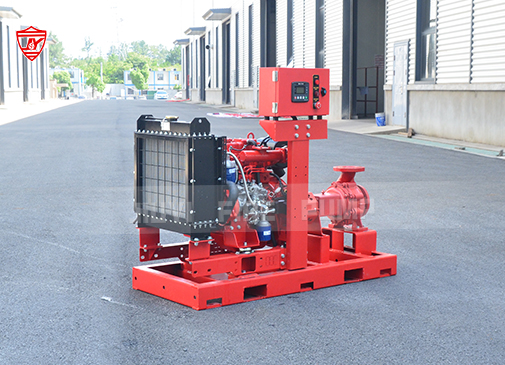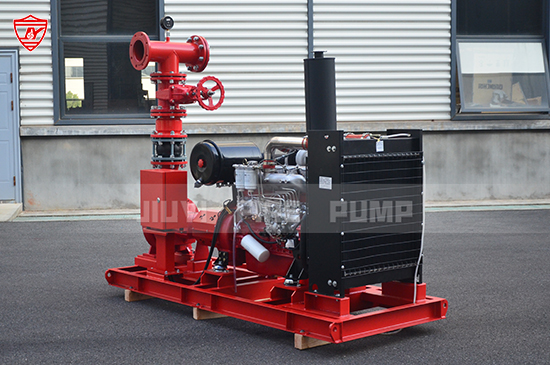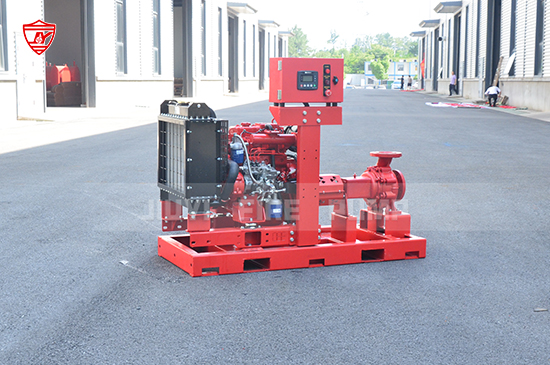Diesel fire pumps play a critical role in fire protection systems, especially in facilities where electrical power supply may not be reliable. Ensuring that your diesel fire pump functions correctly during an emergency requires routine testing as mandated by standards like NFPA 25. This article offers a detailed, step-by-step guide on how to test a diesel fire pump to ensure its readiness, reliability, and compliance with industry standards.
Unlike electric pumps, diesel fire pumps operate independently of the building’s electrical grid. This autonomy is vital during power outages caused by fires or natural disasters. However, their complexity also makes them prone to issues if not regularly maintained and tested. The goal of testing is to simulate real-world conditions without causing unnecessary wear or stress to the system.
Key objectives of diesel pump testing include:
Verifying engine start-up under test conditions
Measuring pump performance (flow, pressure, and RPM)
Confirming automatic operation and control panel functionality
Checking battery charge, fuel supply, and cooling system performance

NFPA 25 outlines clear testing intervals for fire pumps:
Weekly: No-flow (churn) test of diesel engine-driven fire pumps
Annually: Full flow performance test with water flow measurement
Five-Year Intervals: Internal inspections and major system component reviews
This article focuses primarily on the weekly operational test and annual performance test, as these are the most critical and commonly performed.
This is a basic operation test to ensure the diesel engine starts and runs properly.
Notify all stakeholders that a fire pump test is about to begin.
Ensure that test equipment, such as stopwatches, logbooks, and gauges, are on hand.
Place the system in test mode if connected to an alarm system.
Check for any visible leaks, corrosion, or loose wiring.
Verify that the fuel tank is at least two-thirds full.
Inspect cooling water and lubrication oil levels.
Check the condition and charge of the batteries.
Ensure ventilation dampers are unobstructed.
Start the diesel fire pump automatically using the pressure drop method or manually via the control panel.
The pump should start within 10 seconds after sensing a pressure drop.
During the 30-minute churn test, record:
Engine RPM
Suction and discharge pressures
Battery voltage
Oil pressure and water temperature
Fuel level and consumption
Run time
Confirm that alarms and indicators on the control panel function correctly:
Low fuel
Low oil pressure
High water temperature
Battery charger failure
After the test, shut down the pump using the normal stop sequence.
Reset the system, including alarm systems and fire panels.
Document all results and observations in the weekly fire pump log.

This test measures actual pump performance under flow conditions and ensures it meets design specifications.
You’ll need:
Calibrated flow meters or pitot gauges
Pressure gauges at suction and discharge points
Test header or remote test manifold
Flow testing nozzles (usually 2.5-inch hoses with pitot tubes)
Ensure all discharges are secured to prevent injury.
Use proper PPE including gloves, boots, and eye protection.
Open isolation valves and verify system pressure.
Initiate the pump through the controller or pressure drop simulation.
Let the engine stabilize for a few minutes before proceeding.
Conduct the flow test at three key points:
Churn (no-flow) point – Only the discharge pressure is measured.
100% rated flow – Match the rated capacity of the pump.
150% rated flow – Ensure the pump delivers at least 65% of rated pressure.
Record:
Flow rate at each test point
Suction and discharge pressures
RPM and engine performance
Fuel consumption and engine temperature
Compare the actual performance to the manufacturer’s pump curve. If flow or pressure is significantly below expected values, inspect:
Pump impeller for wear
Suction strainers or filters
Valves and piping for obstructions
Engine speed and governor operation
Document the full test results.
Schedule corrective action if any parameter fails to meet NFPA or manufacturer requirements.
Reset the system and confirm that all alarms are cleared.

Even if weekly and annual tests are done, several components should be inspected and maintained periodically:
Fuel System: Replace fuel filters, inspect fuel lines, and test for fuel contamination. Diesel fuel can degrade over time.
Cooling System: Check for blockages, clean strainers, and verify coolant quality.
Battery System: Test both batteries under load, verify charger output, and inspect terminals.
Air Intake and Exhaust: Ensure that intake paths are clear and mufflers are functional.
Engine fails to start within the NFPA-mandated 10 seconds
Low battery voltage due to charger malfunction
Incorrect engine RPM affecting pump output
Leaks in fuel or coolant system
Pressure readings not matching expected curves
Alarms not triggering due to sensor issues
Addressing these issues promptly is essential to ensure fire protection readiness.
NFPA 25: Standard for the Inspection, Testing, and Maintenance of Water-Based Fire Protection Systems is the primary guideline for fire pump testing.
According to the 2023 edition:
Weekly no-flow test for diesel pumps is mandatory.
Annual flow test with recorded data is required.
Five-year internal inspection and performance analysis are highly recommended.
Regular testing of diesel fire pumps is not just about meeting codes; it’s about saving lives and property. A fire pump failure during an emergency can result in catastrophic damage. By following standardized test procedures weekly and annually, you ensure your diesel pump remains reliable, efficient, and compliant with NFPA standards.
As a manufacturer of fire pumps, we strongly recommend partnering with certified service providers or facility teams trained in NFPA 25 testing procedures. Investing in testing today prevents failure tomorrow.